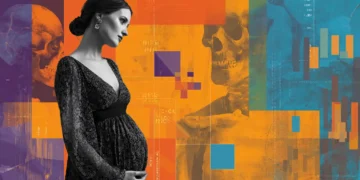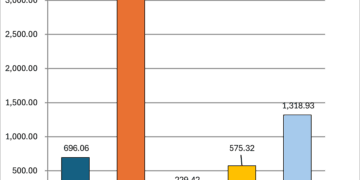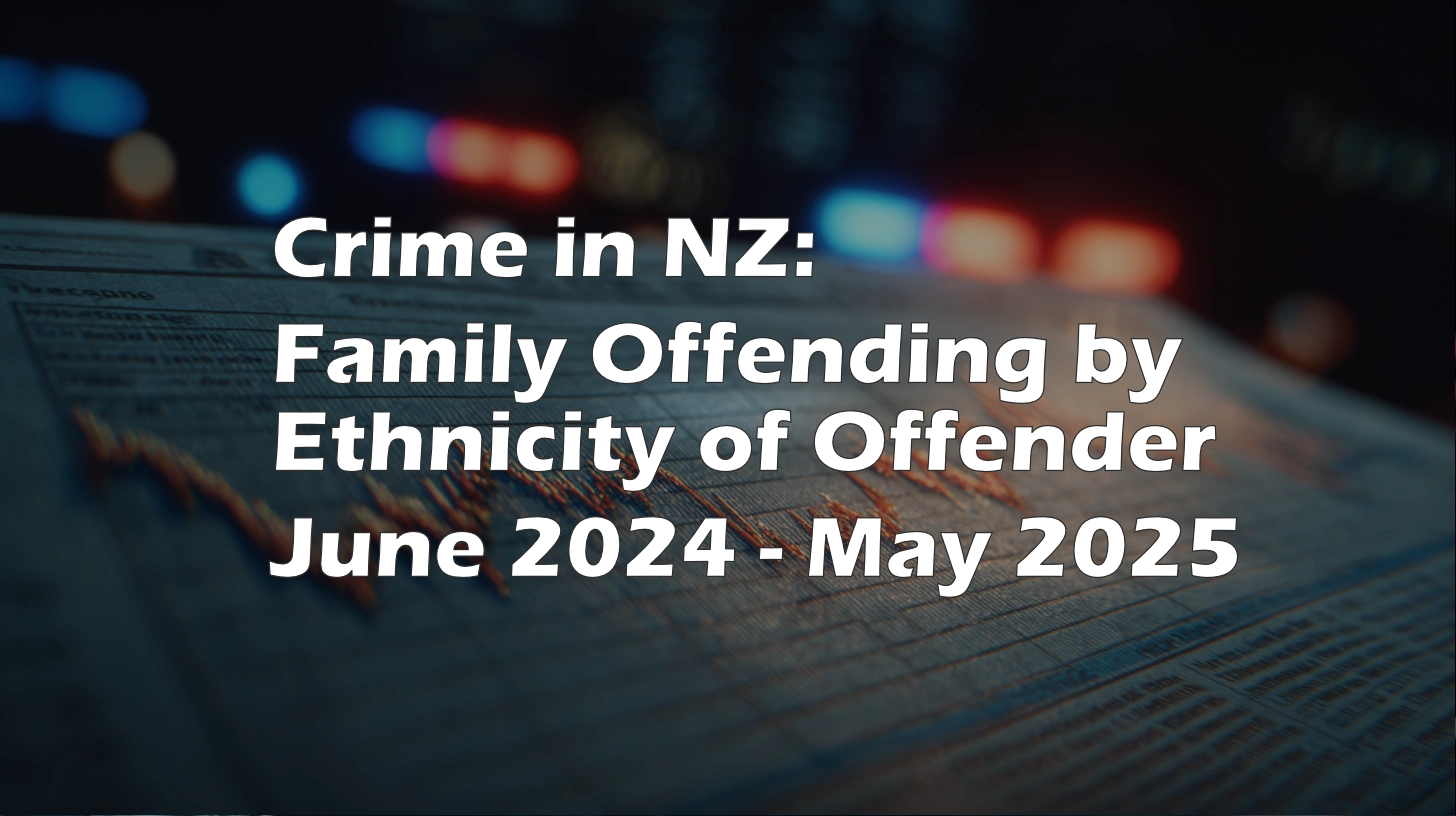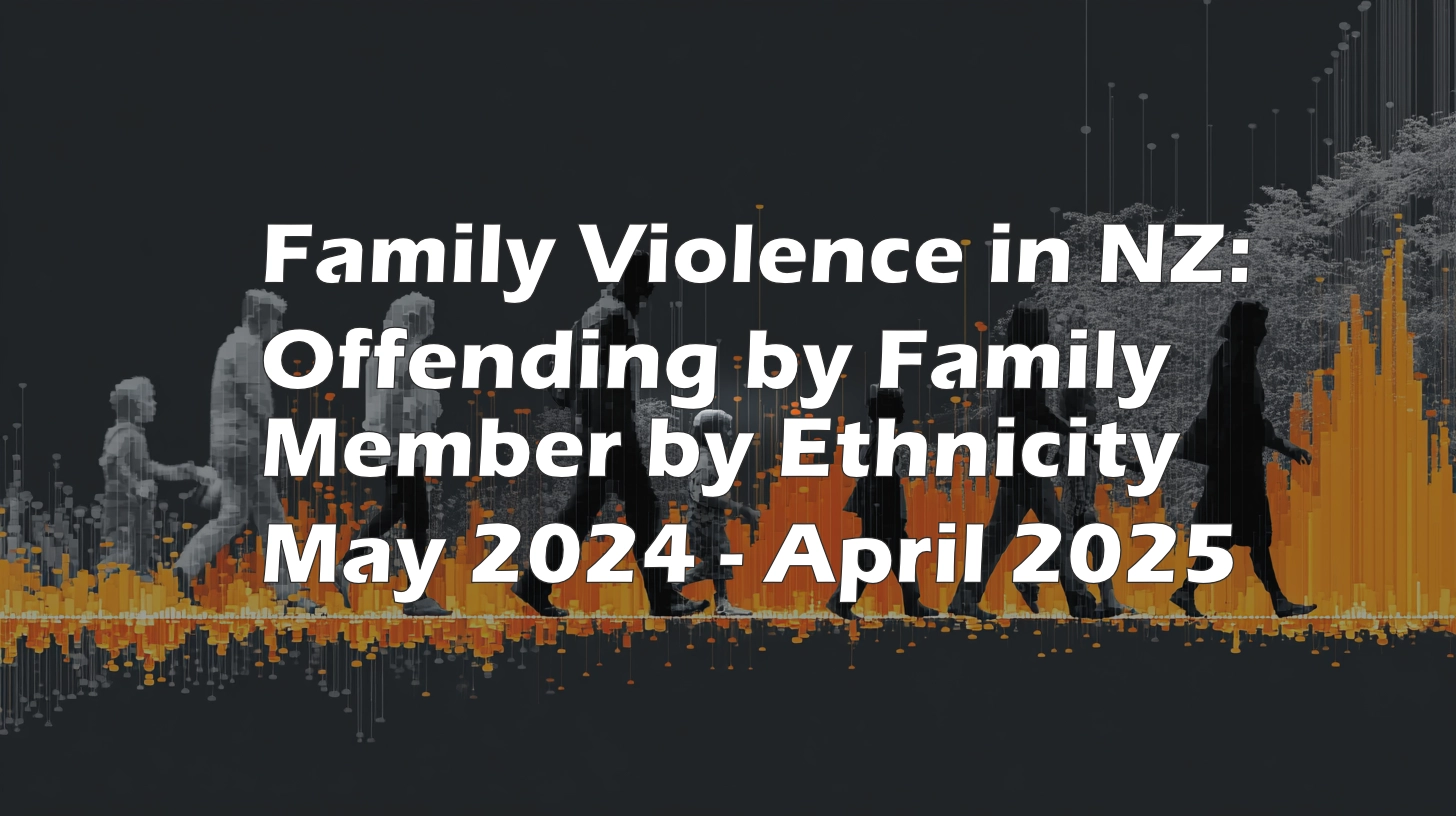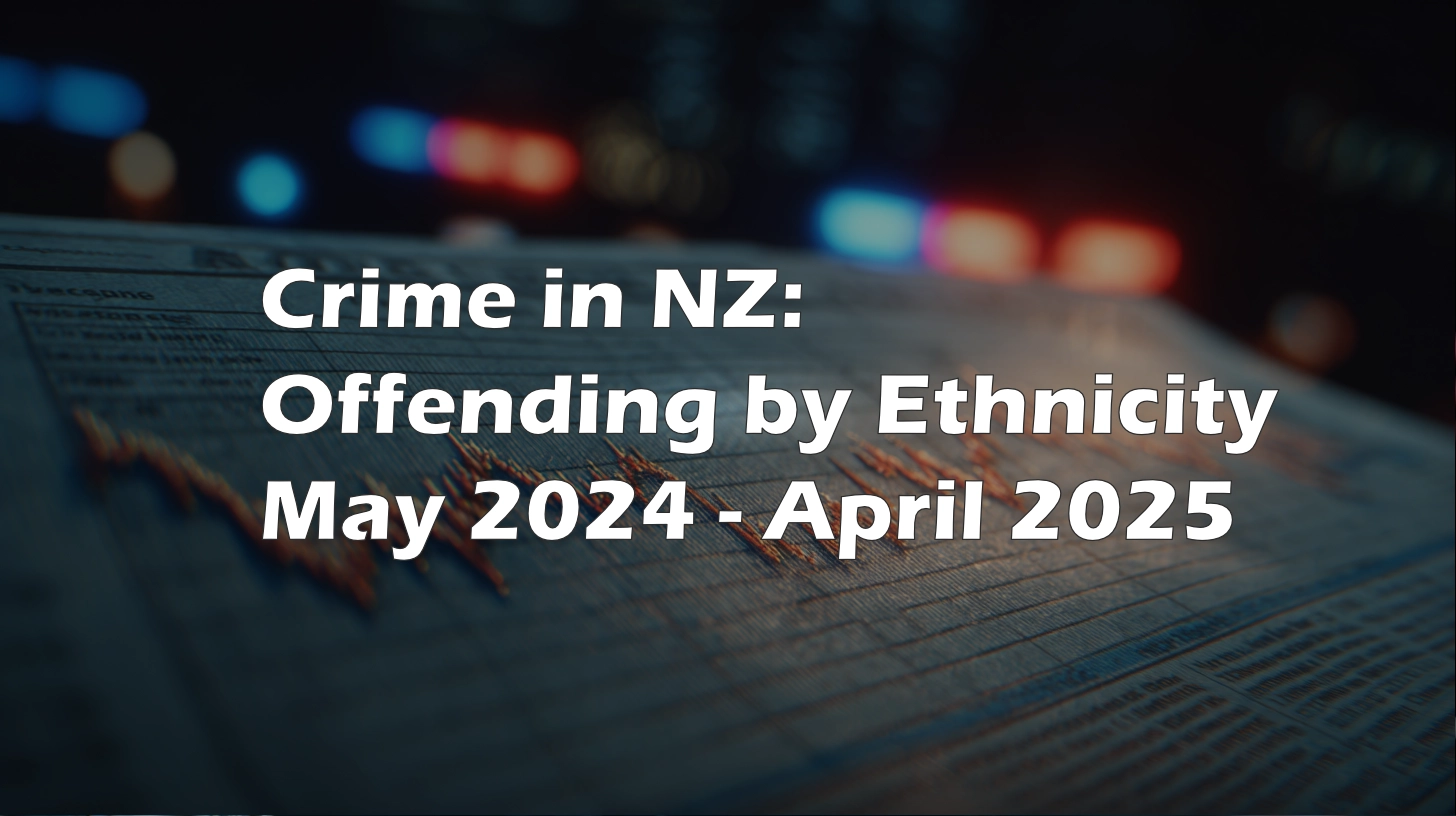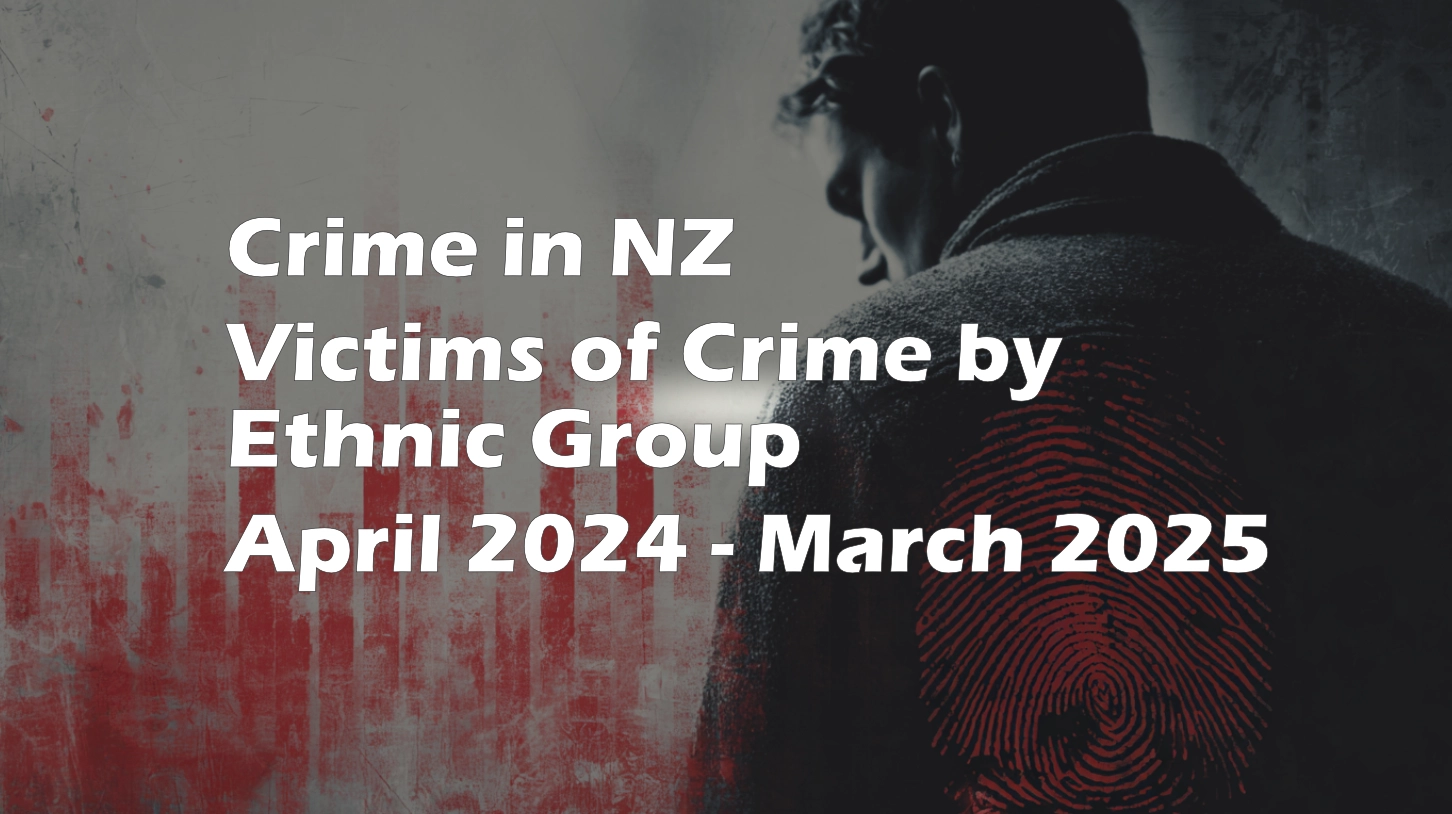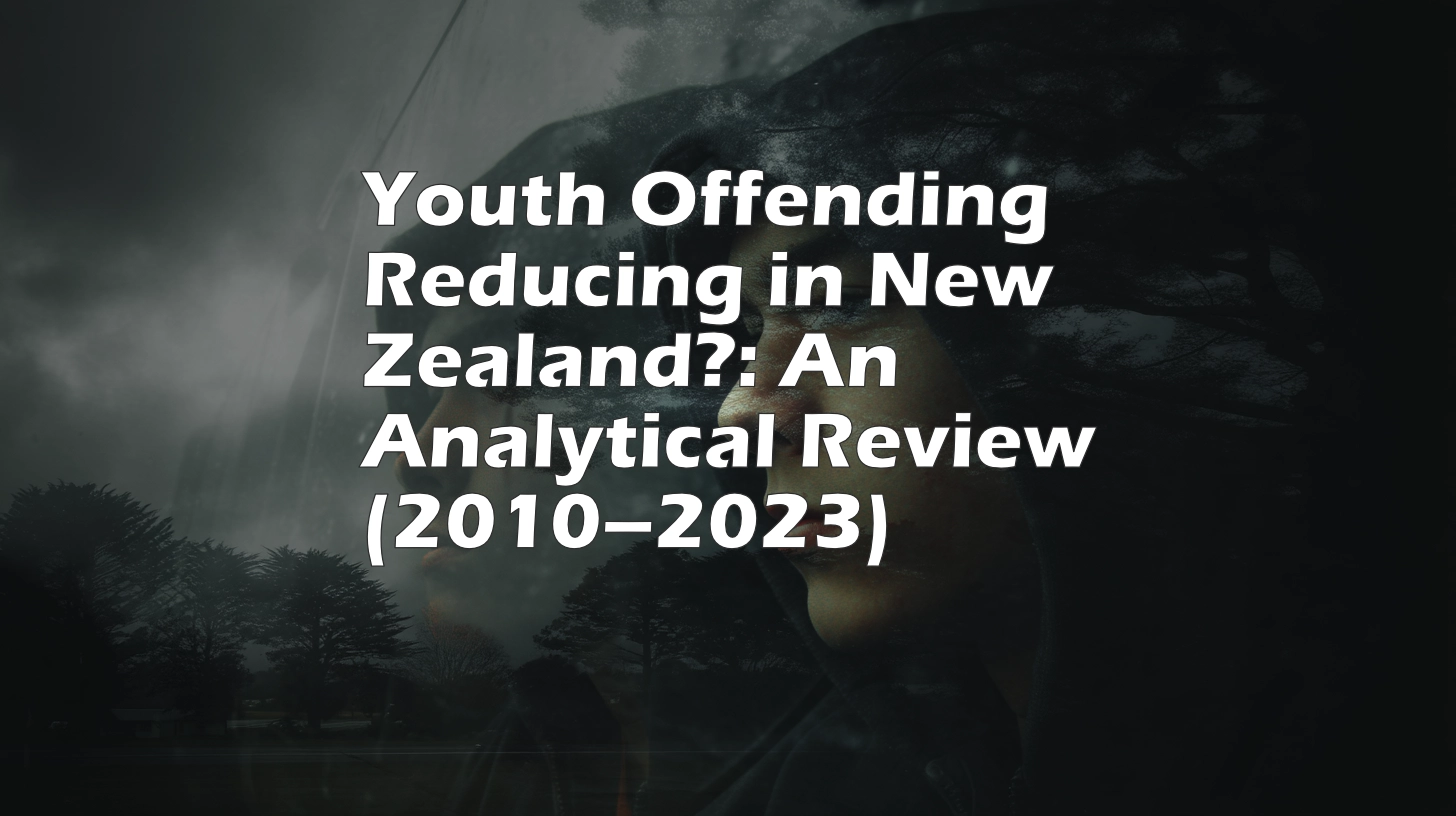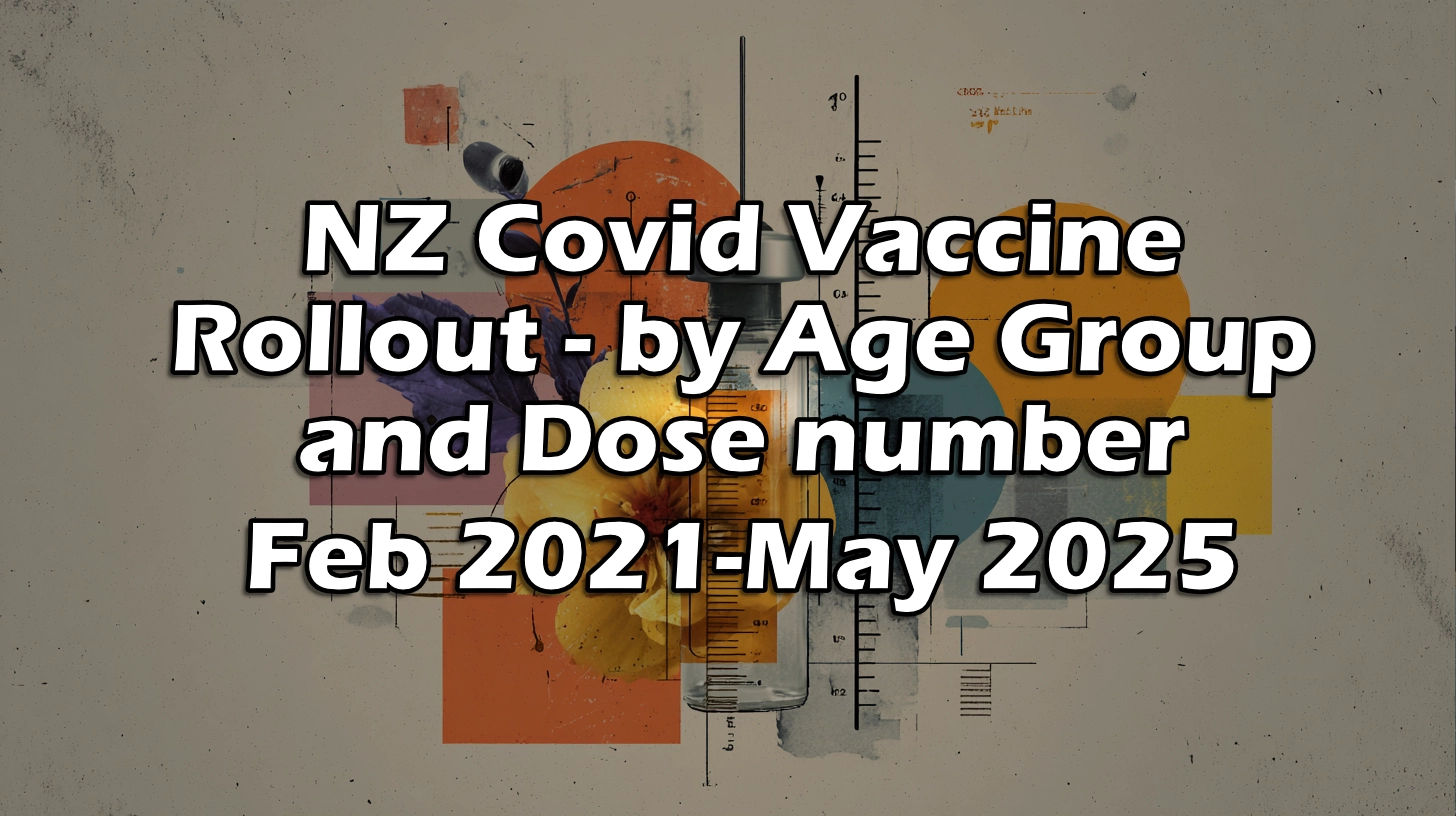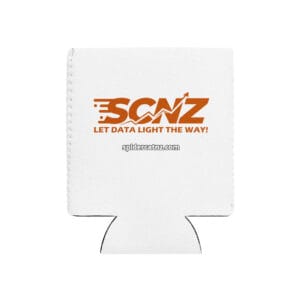Table of Contents
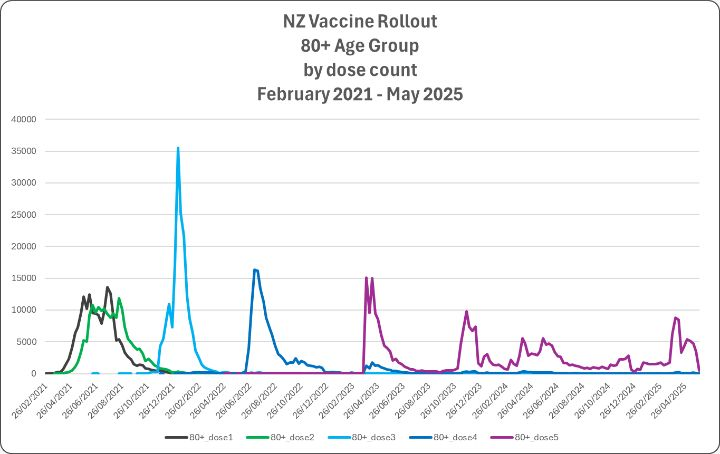
📝 Introduction
New Zealand’s COVID-19 vaccination programme delivered millions of doses across multiple age cohorts between early 2021 and mid-2025. While the national rollout began with a strong focus on adult and elderly populations, eligibility later expanded to children and infants, with adjusted dose schedules and formulations.
This article presents a mechanically faithful summary of the dose-by-dose rollout across five major age bands, using literal dose counts from Ministry of Health datasets. Special attention is paid to when each dose was most popular, how many individuals progressed to subsequent doses, and the timing of those transitions. Importantly, we account for the limitations introduced by the “Dose 5+” classification, which aggregates all doses beyond the fifth and obscures further tracking from late 2023 onward.
Where possible, all percentages and timelines are grounded in literal data, not assumptions — especially for dose progression rates and high-dose recipients. The result is a clear, transparent look at how New Zealanders responded to the vaccine schedule over time, broken down by age and dose stage.
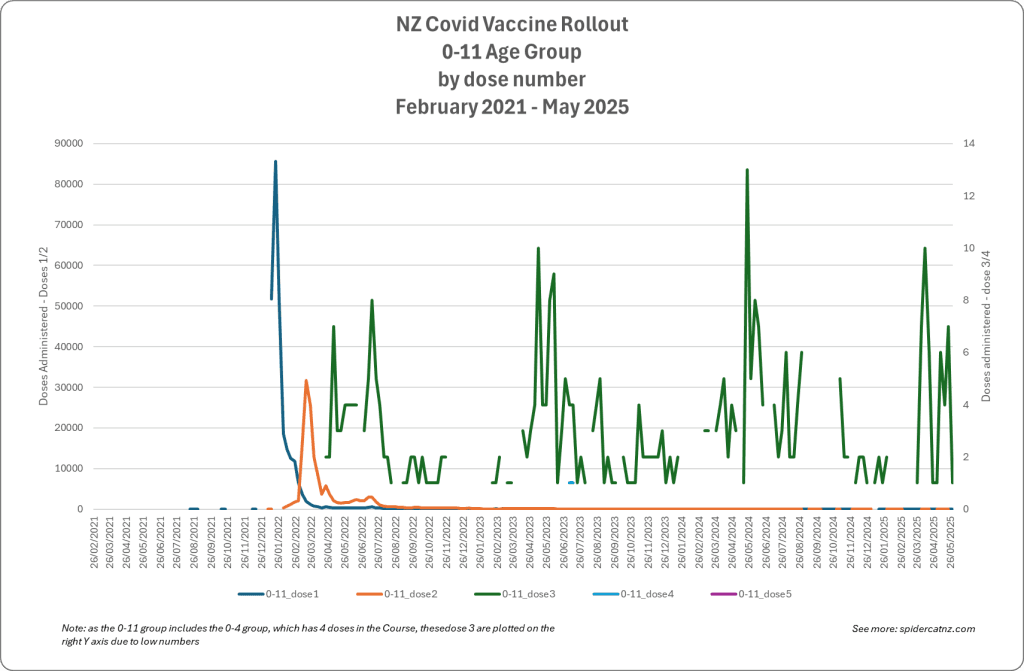
🧬 COVID-19 Vaccine Rollout in New Zealand: Children Aged 0–11 Years
📊 Overview
New Zealand’s COVID-19 vaccine rollout for children aged 0–11 years comprised two entirely separate product schedules under the “Comirnaty” (Pfizer) brand, each tailored to distinct age brackets:
- 5–11 year olds: received the paediatric Pfizer course, consisting of two doses.
- 0–4 year olds: eligible for the infant Pfizer schedule, requiring three doses.
In total, over 270,000 children aged 5–11 received at least one dose, while fewer than 250 infants aged 0–4 began the 3-dose series — a staggeringly low uptake relative to the eligible population.
🧒 5–11 Year Olds: Paediatric Rollout (2-Dose Course)
| Metric | Value |
|---|---|
| Dose 1 (cumulative) | 272,963 |
| Dose 2 (cumulative) | 159,055 |
| Progression to Dose 2 | 58.3% |
| Dose 1 peak distribution | 21 Jan 2022 |
| Dose 2 peak distribution | 18 Mar 2022 |
| Time to reach 90% of total Dose 2s | ~259 days |
- The 5–11 rollout was fast and front-loaded, concentrated within the first three months of 2022.
- Fewer than 3 in 5 children who began the course completed the second dose.
- There was no standard recommendation for a third dose in this age group.
- However, some children progressed to additional doses — almost certainly due to severe immunocompromise or on clinical grounds.
Additional doses recorded (likely older children or immunocompromised 5–11 year olds):
- Dose 3: 375
- Dose 4: 18
- Dose 5+: 3
👶 0–4 Year Olds: Infant Rollout (3-Dose Course)
| Metric | Value |
|---|---|
| Dose 1 (cumulative) | 232 |
| Dose 2 (cumulative) | 148 |
| Dose 3 (cumulative) | 162 |
| Estimated course completion rate | ~69.8% |
| Rollout duration | ~2 years |
- The infant rollout began mid-to-late 2023, with progress extremely slow throughout, as the recipients were those infants who “were at serious risk if they catch Covid”.
- No recorded 4th doses were part of the official infant schedule. Any 4th dose associated with the 0–11 cohort is presumed to be an older child or a data classification error.
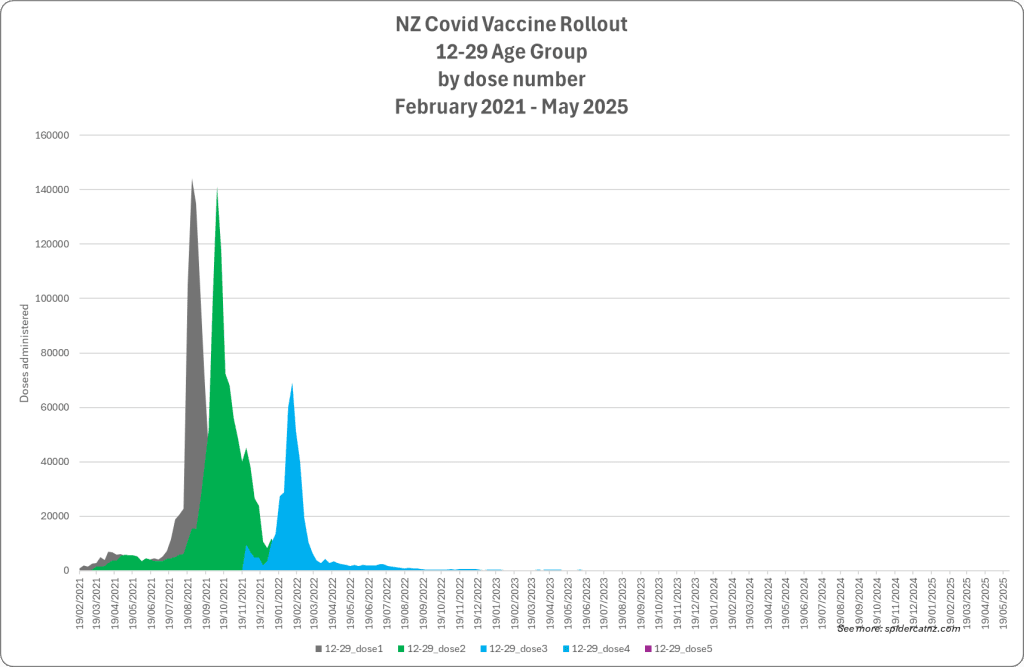
🧑🎓 COVID-19 Vaccine Rollout: Young Adults Aged 12–29 Years
| Metric | Value |
|---|---|
| Dose 1 (cumulative) | 1,148,217 |
| Dose 2 (cumulative) | 1,114,832 |
| Dose 3 (cumulative) | 444,280 |
| Dose 4 (cumulative) | 16,894 |
| Dose 5+ (cumulative to Dec 2023) | 3,902 |
| Estimated Dose 4 → Dose 5 uptake | 23.1% |
- Uptake of the initial two-dose course was extremely high, with 97.1% of Dose 1 recipients completing Dose 2.
- Booster (Dose 3) uptake dropped significantly, with only 39.9% of Dose 2 recipients continuing.
- Among those who received a Booster:
- Only ~3.8% continued to Dose 4
- Just 23.1% of Dose 4 recipients received a fifth dose before Dose 6 began
- By December 2023, the “Dose 5+” field began aggregating multiple higher doses, limiting accuracy of post-Dose 5 tracking.
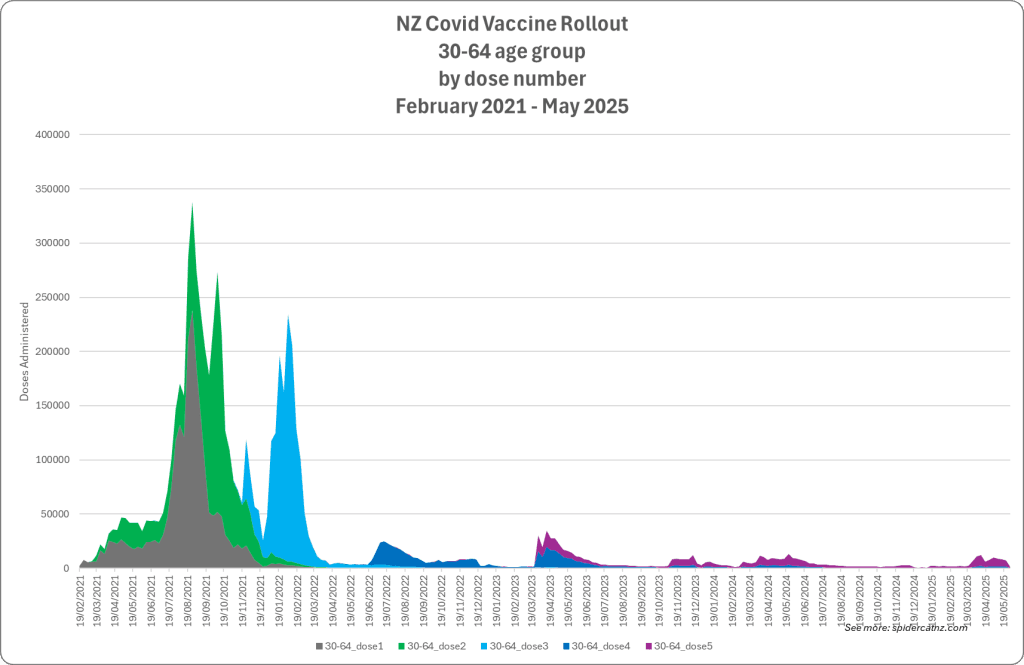
👥 COVID-19 Vaccine Rollout: Adults Aged 30–64 Years
| Metric | Value |
|---|---|
| Dose 1 (cumulative) | 2,160,489 |
| Dose 2 (cumulative) | 2,114,915 |
| Dose 3 (cumulative) | 1,588,042 |
| Dose 4 (cumulative) | 517,391 |
| Dose 5+ (cumulative to Dec 2023) | 151,867 |
| Estimated Dose 4 → Dose 5 uptake | 29.4% |
- The 30–64 group had strong uptake early on:
- Over 97% of Dose 1 recipients completed Dose 2
- Around 75% of those went on to receive a Booster (Dose 3)
- Uptake fell sharply for subsequent boosters:
- ~32.6% moved from Dose 3 to 4
- Only 29.4% of Dose 4 recipients received a fifth dose before Dose 6 rollout began.
- After late 2023, the “Dose 5+” column became non-specific, blending multiple higher-dose recipients.
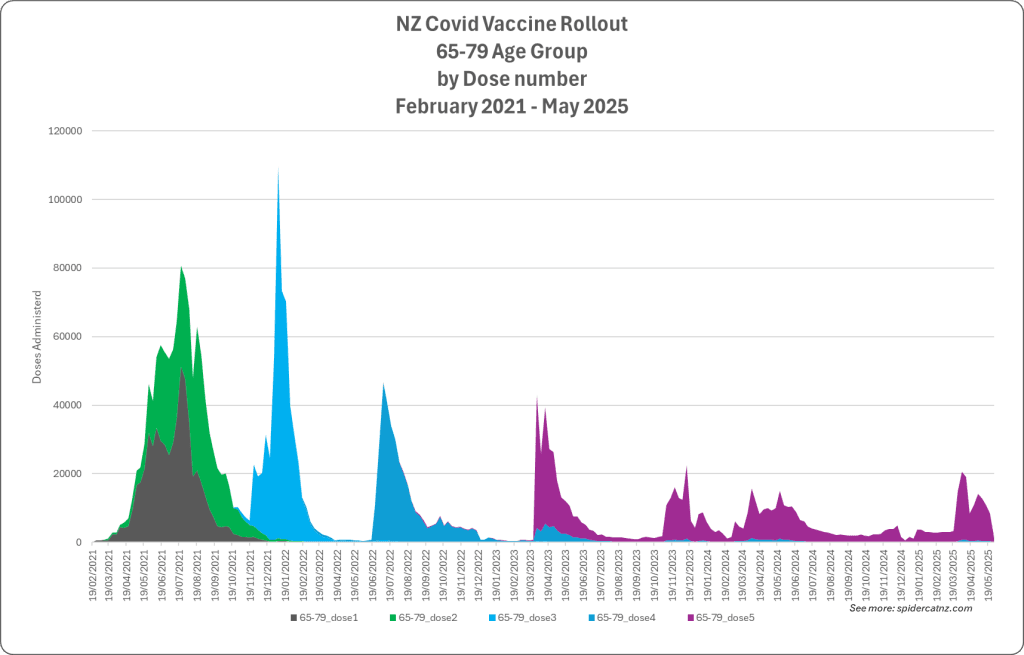
🧓 COVID-19 Vaccine Rollout: Adults Aged 65–79 Years
| Metric | Value |
|---|---|
| Dose 1 (cumulative) | 590,348 |
| Dose 2 (cumulative) | 586,083 |
| Dose 3 (cumulative) | 549,463 |
| Dose 4 (cumulative) | 418,673 |
| Dose 5+ (cumulative to Dec 2023) | 288,518 |
| Estimated Dose 4 → Dose 5 uptake | 68.9% |
- This group had nearly full 2-dose course completion: 99.3% of Dose 1 recipients took Dose 2.
- Booster uptake (Dose 3) remained very high (93.8% of Dose 2 cohort).
- 76.2% of Dose 3 recipients went on to Dose 4.
- Prior to the Dose 6 era, nearly 7 in 10 Dose 4 recipients took a fifth dose.
- Post-December 2023, the accuracy of this count declines due to “Dose 5+” merging.

👴 COVID-19 Vaccine Rollout: Adults Aged 80+ Years
| Metric | Value |
|---|---|
| Dose 1 (cumulative) | 183,532 |
| Dose 2 (cumulative) | 182,769 |
| Dose 3 (cumulative) | 178,486 |
| Dose 4 (cumulative) | 149,704 |
| Dose 5+ (cumulative to Dec 2023) | 123,494 |
| Estimated Dose 4 → Dose 5 uptake | 82.5% |
- Extremely high follow-through at all stages:
- 99.6% completion of Dose 2
- 97.7% uptake of Booster (Dose 3)
- 83.9% moved from Dose 3 to Dose 4
- Among all age groups, the 80+ cohort had the highest continuation to Dose 5, with 82.5% of those receiving Dose 4 moving on prior to Dose 6 rollout.
- Due to aggregation of Dose 6+ into the same column, the values beyond late 2023 are no longer dose-specific.





